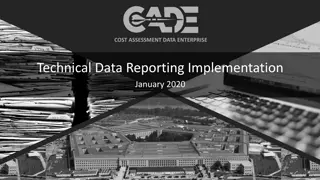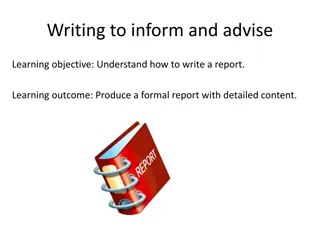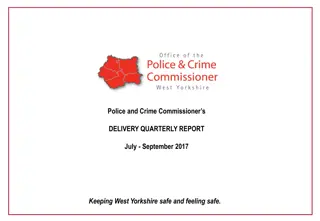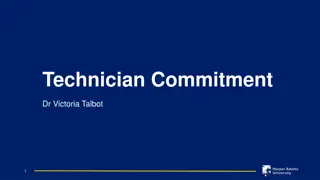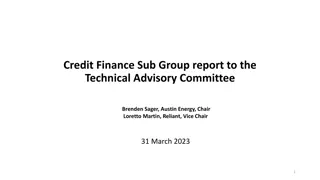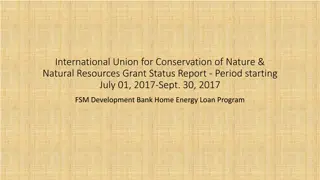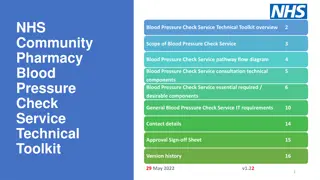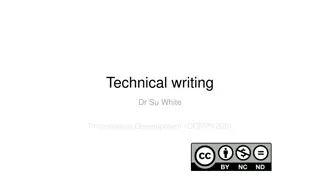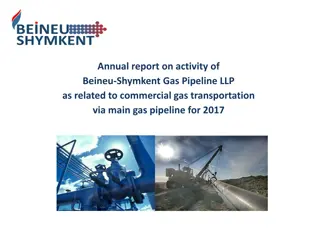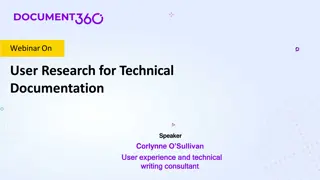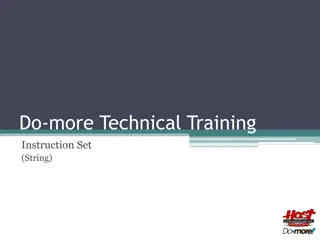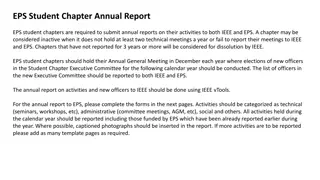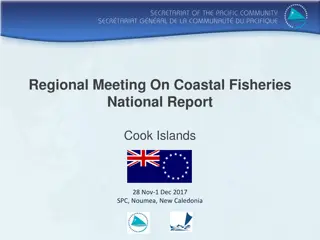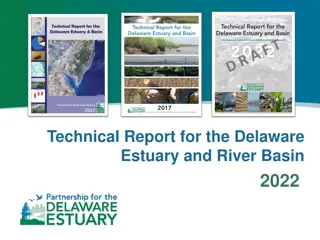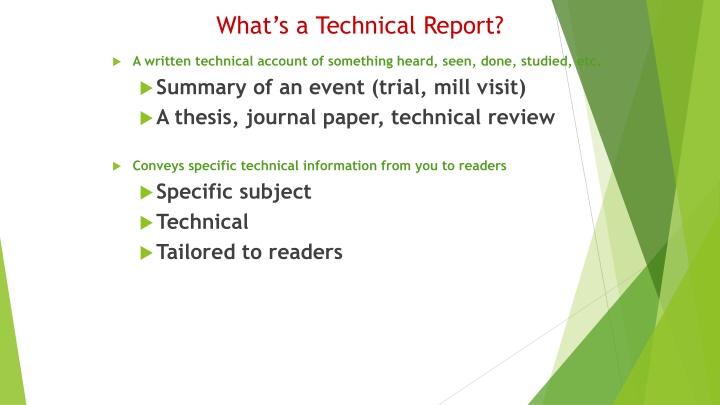
Effective Technical Report Structure & Writing Guidelines
Learn about the key components of a technical report, including structure, title, appearance, and purpose. Understand how to create an impactful report to convey specific technical information effectively to readers.
Download Presentation

Please find below an Image/Link to download the presentation.
The content on the website is provided AS IS for your information and personal use only. It may not be sold, licensed, or shared on other websites without obtaining consent from the author. If you encounter any issues during the download, it is possible that the publisher has removed the file from their server.
You are allowed to download the files provided on this website for personal or commercial use, subject to the condition that they are used lawfully. All files are the property of their respective owners.
The content on the website is provided AS IS for your information and personal use only. It may not be sold, licensed, or shared on other websites without obtaining consent from the author.
E N D
Presentation Transcript
Whats a Technical Report? A written technical account of something heard, seen, done, studied, etc. Summary of an event (trial, mill visit) A thesis, journal paper, technical review Conveys specific technical information from you to readers Specific subject Technical Tailored to readers
Typical Report Structure Title Summary (Abstract, Executive Summary) Introduction (Background) Objective Methodology (Approach) Results and Discussion Conclusions Implications References (key ones only) Acknowledgements Appendices
Report Structure: Title Page Abstract Acknowledgements Contents Page(s) Chapter 1 (Introduction) MAIN BODY OF REPORT (i.e. several chapters) Chapter n (Conclusion) References Bibliography Appendices
Title A shortest possible phrase that describes what the report is about Defines the scope of the report Example: Investigation of the Effect of SO2 Concentration on Fireside Deposit Accumulation on Tube Surfaces in Recovery Boilers (17 words) Effect of SO2 on Deposit Accumulation in Recovery Boilers (9 words)
Report Appearance Front Cover from supervisor. The report should be word processed on plain white paper. Font should be Arial or a Times Roman for normal text. Helvetica for headings. Font Size 12 (for normal text) (size > 12 for headings) Left margin 30mm. Right margin 20mm. Top margin 25mm. Bottom margin 30mm. One and a half times spacing (except for Abstract)
Page Numbering Page numbering should start with Chapter 1. Pages numbered consecutively through the main text including diagrams etc. Page numbers shown centrally at the bottom of the page in the bottom margin. There should be no Chapter or Report headings at the top of each page. New chapters should start on a new page. The text should be organised as a sequence of numbered chapters. Within each chapter, the material should be broken down into sub- sections with their own sub-heading. A hierarchical system of numbering of chapters,
Purpose of Technical Writing Present a new idea, product or result to an audience that can make use of it in a level of detail appropriate for that audience Types of results Algorithm System component (hardware, software, protocol) Performance eval. (analytical, simulated, measured) Theoretical framework (theorems, lemmas, etc) System model (way of looking at an object)
Default Style (unless otherwise directed) 8.5 x 11 inch or A4(210 x297 mm) paper If single-sided, no garbage on the back side Double-sided OK to conserve paper One inch margins all around Single-column format Professional looking font e.g. Times New Roman or LaTeX \rm font 12-point for normal text Dark, black, letter quality print (no dot matrix)
Default Style (unless otherwise directed) Double-space or 1.5-space much easier to read allows room for reviewers comments Paragraphs Use some! Leave a blank line between paragraphs Indenting the 1st line is optional Bind only in a 3-ring binder On-line submission even better
Default Style (unless otherwise directed) Numbering pages, figures, tables all numbers must be globally unique all must be in lexicographically increasing order, e.g. 1, 2, 3, 4 I-1, I-2, I-3, II-1, II-2, II-3 (for very long reports) Numbering Chapters, Sections, Subsections must be globally unique and hierarchical, e.g. 1.3 Gnus and Gnats I.C Gnus and Gnats 1.3.1 Gnus I.C.a Gnus 1.3.2 Gnats I.C.b Gnats
Summary Placed at the beginning of the report (or at the end) One or a few paragraphs summarizing the main points of the report Written for Busy people who want to know only the main points Curious people who decide whether or not it s worth reading further Stick to Title and Objective
Abstract Must be clear and concise (typ. 150 - 400 words) Reader must be able to quickly identify content Helps reader decide whether to read the paper Briefly summarize problem significance approach Results Do not cite references (abstract may be published alone)
Abstracts This will be one page only of single spacing. It should be between 150 and 400 words in length. It can only be written after the report has been finished. It should highlight to the intended reader the main features of the project and any conclusions reached. It should be self contained and self explanatory. What the project is about. main techniques and methodologies used. What the main results/conclusions were.
Introduction/Background WHY Introduce readers to the subject or work you are about to report Provide background information on the subject Stick to keywords in the Title Why is it so important? Why hasn t it been done before? Must lead Objective
Introduction Let the reader know what the paper is about Define and motivate the problem Overview limitations of state-of-the-art Overview your approach Overview your results Get to the point quickly Know your audience Do not refer to or depend on the Abstract Final paragraph should outline organization of paper
Chapter One - Introduction Introduction to your PROJECT not the topic How the problem arose. The work of previous projects you are building on. The follow on of a problem encountered during your industrial year. The solution of a problem for your employer. The aims and objectives of your project. Also the approach you intend to adopt. The scope and limitations of the project. Framework of the report. The purpose of each chapter and its main features should be stated. The evaluation and discussion of results should await the main body of the report.
Objective WHAT Brief statements of WHAT you want to achieve or obtain from your work
Main Body Background expand on problem statement explain state-of-the-art and its limitations Approach describe in sufficient detail for the audience clearly state applicability and limitations compare to state-of-the-art, if appropriate Highlight the differences examples can help a lot
Main Body Results clearly state what they are clearly compare to other benchmarks, e.g. state-of-the-art alternatives optimal solutions (if known) na ve solutions (e.g. random guessing) clearly state your comparison criteria, e.g. accuracy complexity or time cost
Main Body Conclusions and future work drive the results home clearly and concisely restate your main results restate their significance a reviewer or reader may start by reading the Introduction and Conclusions first Clearly state where we can go from here shows the work has a future invites participation from the readers
Main Body The number and nature of the chapters will vary from project to project. There should be a chapter giving background to the project. It will :- describe the specific problem being tackled, state the objectives of the project (if they changed during the project the justification must be given) the methods being used to achieve them. The choice of method used should consider what the alternatives were and why the one you chose was selected.
Developmental projects will have chapters dealing with:- Design Development Testing There should also be chapters which involves a theoretical discussion and critical evaluation of the project. The critical evaluation should include not only the product, but also the process you went through in your project work.
Figures and Tables Try to embed figures and tables in the main text if necessary, insert special section after References Use graphical software if at all possible use hand-drawn figures only as a last resort Must be numbered & referred to by number in the text Locate figure after paragraph containing 1st reference Do not refer to the following figure (they may move) All figures and tables need a short numbered caption, e.g., Figure 1: 1998 Gnu-to-Gnat Population Ratios Generally located under a figure but above a table
Figures and Tables All objects and fonts must be clearly readable if a figure is too big, break it into smaller figures add a figure to hierarchically decompose it All must be accompanied by explanatory text walk the reader through the figure or table clearly state the results you want the reader to see clearly state the relationships between related figures Know what you want each figure to illustrate one good figure really is worth a thousand words a thousand bad figures are worth nothing
Results and Discussion Break into smaller sections Discuss the first result in detail; discuss subsequent results only briefly but focus more on the difference Be critical Do the results make sense? Are they consistent with previous findings? If not, why not?
Conclusions Not the same as Summary or Abstract Things that you can conclude based on the results of your own work List the most important one first Stick to Title and Objective Avoid drawing conclusions based on assumptions Assume A=B, since B=C, therefore A=C
Conclusion The conclusion to a report should summarise and assess the work: what has been achieved, what has been discovered, emphasise the main points. point out any limitations. make recommendations for further work. The conclusion should not raise any new issues (other than suggestions for further work). In addition to the above a conclusion to a project must reflect on your own personal learning experience. What have you learnt about doing a computer project? What would you do differently if starting the project afresh?
Implications What do the findings mean in practice? How do they help solve the problems?
Appendices Use for long complex data of peripheral interest Data that would disrupt the flow of the main text, Data the casual reader does not need, e.g. Huge figures Large tables of raw data Complete source code listings Limit each appendix to 1 major topic Each must be lettered, and cited in the text by letter Remember, page numbers must be globally unique
Appendices Contains further supporting detail that is of a more technical nature than required for the main body of the report Appendix A should contain a copy of your PRO2 form Appendix B should deal with project management. Other Appendices - Screen Designs, questionnaires, summary results of surveys, program designs etc. Do not include program listings Hand programs in on disks or technical documentation to supervisor.
References and Citations References are listed in the References section Do not use footnotes for references Footnotes are used for parenthetical comments Options for order of the reference list: Alphabetical by last name of first author In order of citation in the paper Must have a consistent mapping All references in the list must be cited in the text All references cited in the text must be listed
References and Bibliography References- Alphabetical listing of references to the format given above for all sources cited in the report. Bibliography-This is a further list of references that you have read and found to be of assistance in your project. This section should contain books that have been used extensively as part of your project but have not been explicitly quoted or paraphrased in the report. The references in this section should be followed by additional comments of your own explaining the relevance of the reference.

